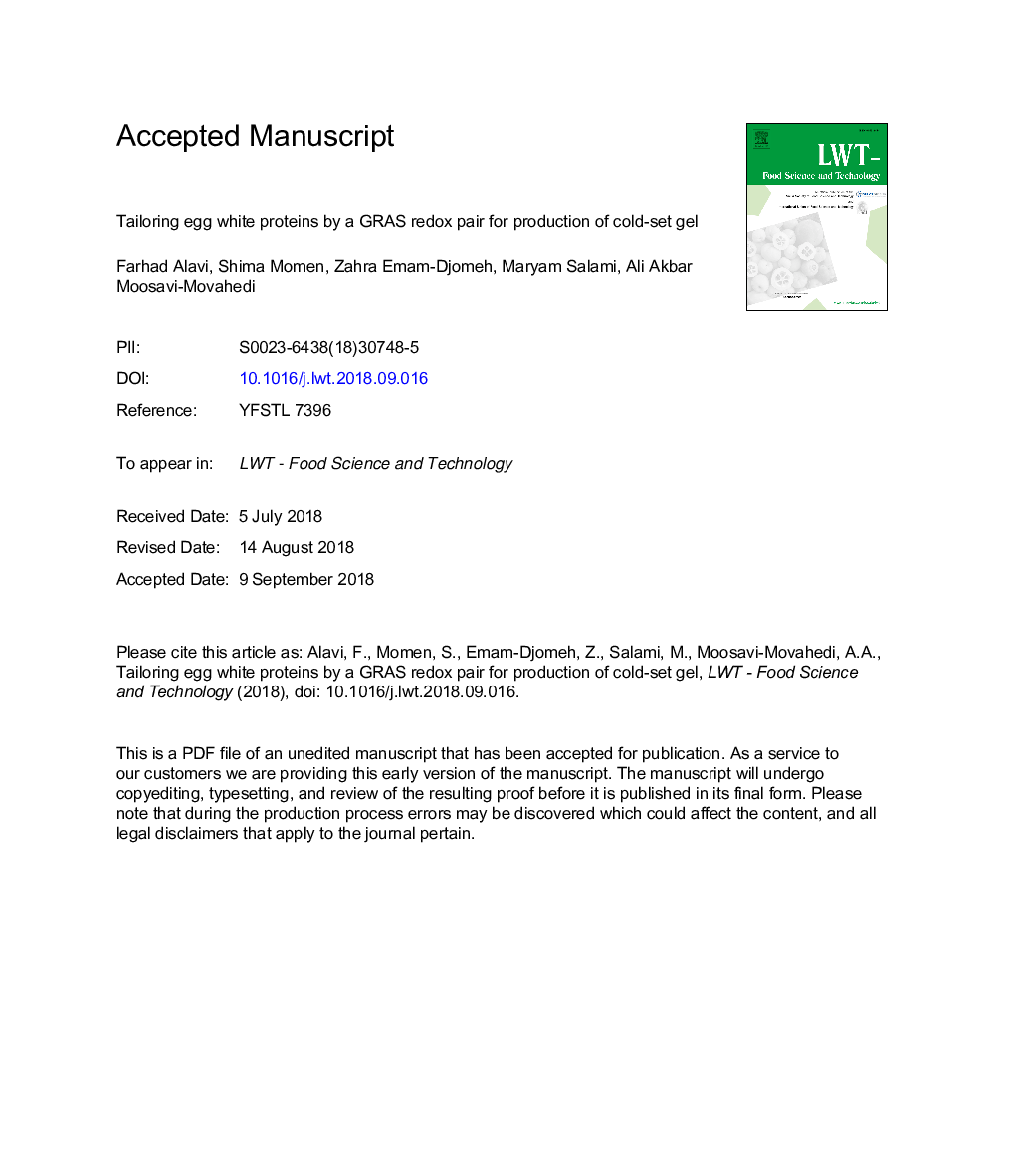| Article ID | Journal | Published Year | Pages | File Type |
|---|---|---|---|---|
| 10130455 | LWT - Food Science and Technology | 2018 | 34 Pages |
Abstract
The present study aimed to modify egg white protein (EWP) to produce gelable aggregates by a redox pair (ascorbic acid + hydrogen peroxide). This technique eliminates the primary heating step and leads to gelation of non-heat-treated EWP. The redox pair modification mainly modified the egg white proteins by the formation of the disulfide bonds, as evidenced by a dramatic decrease in the free SH groups. Circular dichroism, Fourier-transform infrared spectroscopy (FTIR), and fluorescence analysis indicated that exposure of EWP to the redox pair caused an alteration in the secondary and tertiary structure of the egg white proteins. Furthermore, the particle size data revealed that protein aggregation occurred in the modified egg white proteins (MEWP). The pH at which the modification was performed had a significant effect on the production of gelable aggregates, where only EWP samples modified at pH 10 and 11 had the ability for development of cold-set gels. It sounds the redox pair-induced increase in particle size and surface hydrophobicity of egg white proteins had a dominant contribution to the ability of the MEWP to form a cold-set gel.
Related Topics
Life Sciences
Agricultural and Biological Sciences
Food Science
Authors
Farhad Alavi, Shima Momen, Zahra Emam-Djomeh, Maryam Salami, Ali Akbar Moosavi-Movahedi,
